Lately, Dubrovnik has drawn attention to itself as a Game of Thrones filming location so it doesn’t need any promotion, just the opposite. Be prepared for crowds any time of the day when visiting the city in the summertime. As one of maybe not so many people who don’t watch TV at all and who therefore have not seen Games of Thrones, I can’t be a big help in this sense. I just offer my suggestions of how to spend two days in Dubrovnik and some tips for visiting this beautiful town. But let me start with some insights into the history of Dubrovnik.
A short history of Dubrovnik
Dubrovnik, originally called Ragusa, was founded in the 7th century as a refuge for coastal residents fleeing the advancing barbarians. 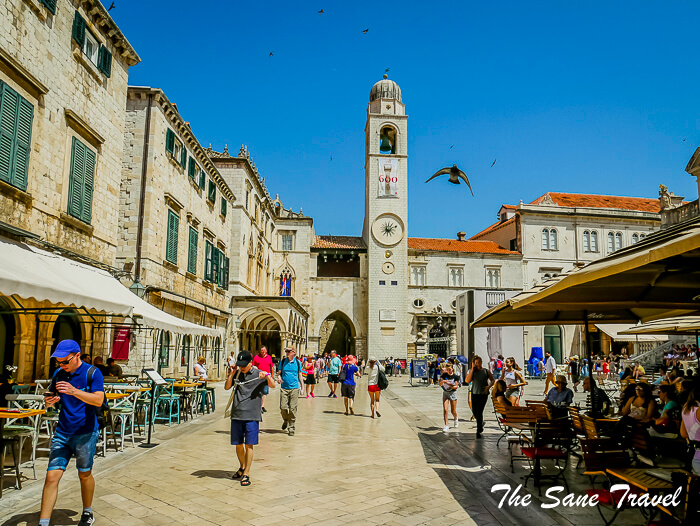
Dubrovnik was the capital of the aristocratic maritime Republic for 450 years from the middle of the 12th century until the early 19th century. It reached its commercial peak in the 15th and 16th centuries when it was one of the freest and most prosperous enclaves on the planet. Its Latin motto was "Non bene pro toto libertas venditur auro", (“Liberty is not sold for all the gold in the world”). A catastrophic earthquake in 1667 destroyed the city, along with a large amount of its Renaissance art and architecture. From 1815 to 1918 Dubrovnik was part of the Habsburg Empire. Dubrovnik was put on UNESCO’s world heritage list in 1979. The city was significantly affected by the break-up of Yugoslavia. In the early 90s, over two-thirds of the historic town buildings were hit by artillery. After repair and restoration work in the 1990s and early 2000s, Dubrovnik re-emerged as one of the best tourist destinations in Europe..jpg)
Day one
When entering the city through the Pile gate, you have two options: start with a walk on the city walls or do your own walking tour. 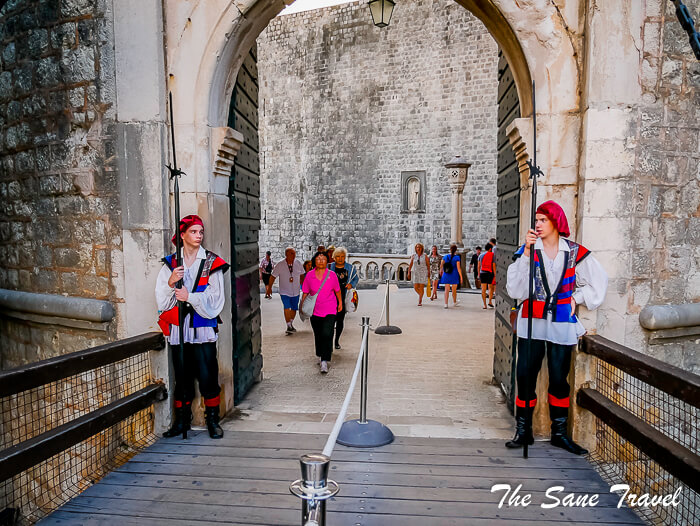 I start with a city walking tour and end with a walk on the walls.
I start with a city walking tour and end with a walk on the walls.
So here you go:
Great Onofrio Well
One of the first things you notice after entering the city through the Pile Gate is the great Onofrio well. It was part of the city’s water mains, constructed in the 15th century, that brought water from the Dubrovacka River 12km away.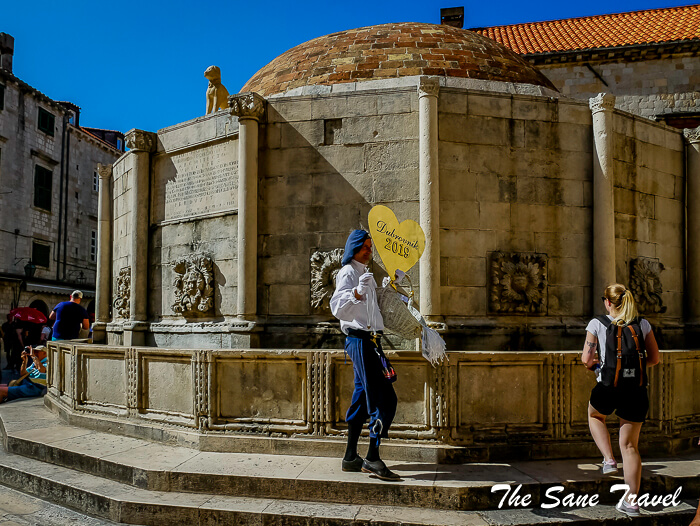
Franciscan Monastery
The large complex of the Franciscan monastery is situated to the left of the inner Pile Gate, next to the Holy Saviour Church. The monastery was built in the 14th century but was destroyed in the Great earthquake of 1667. The cloister of Friars Minor Monastery is one of the most beautiful places to visit inside the Old Town Dubrovnik. In combination with the valuable museum exhibits and its centuries old pharmacy, it makes the Franciscan Monastery an awesome attraction of Dubrovnik, one for every visitor to check out. Today the Friars Minor Pharmacy is the third oldest functioning pharmacy in the entire world. 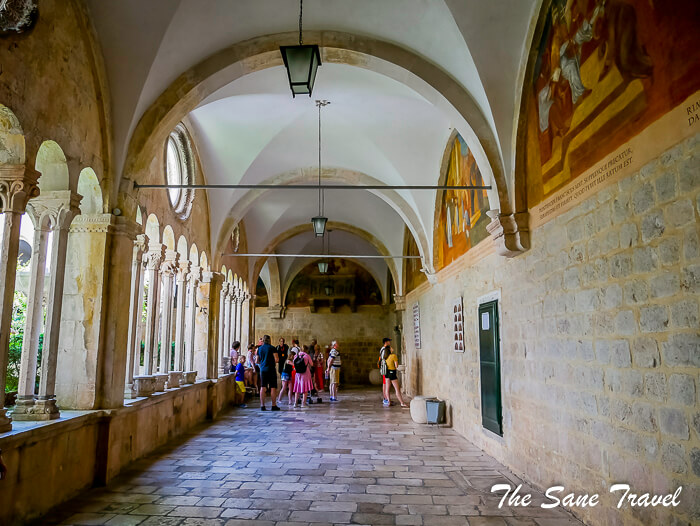
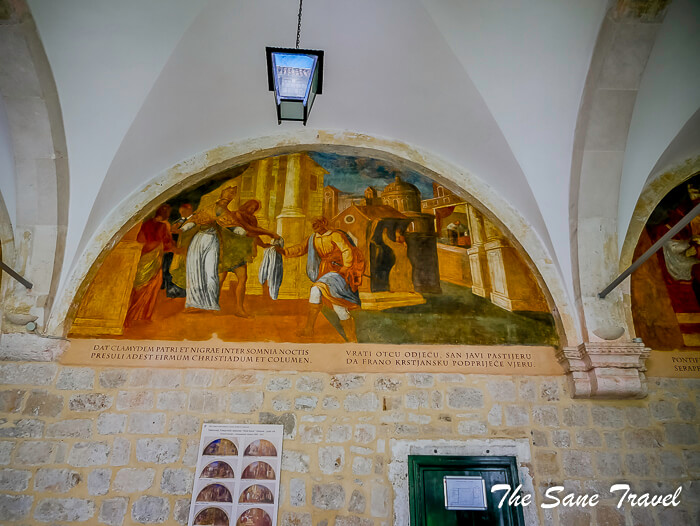
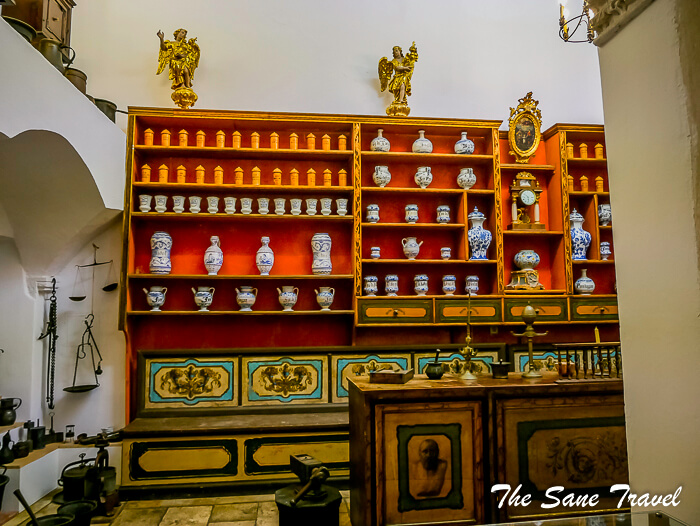 Free with Dubrovnik card.
Free with Dubrovnik card.
Walk Stradun Street to the Belltower
One of the main tourist attractions of Dubrovnik is the Stradun, the main street in the Old Town. It’s made of white marble and has beautiful late-Renaissance houses on each side of it. Dubrovnik’s Stradun crosses the city from the Pile Gate on the west side to the Rector’s palace, the bell tower and Orlando’s column on the east side, just beside the port. The iconic City Bell Tower was built in Dubrovnik in the early 15th century. Two ‘Green Men’, lovingly named Maro and Baro by the locals, strike the bell every half an hour with hammers. The clock not only tells the time but also displays the phase of the moon. Unfortunately, the only part of the bell tower that is original is the actual bell. Due to earthquakes causing the tower to lean, the entire clock tower was completely rebuilt in the early 20th century. The Maro and Baro figures are also replicas; the originals reside in a museum. 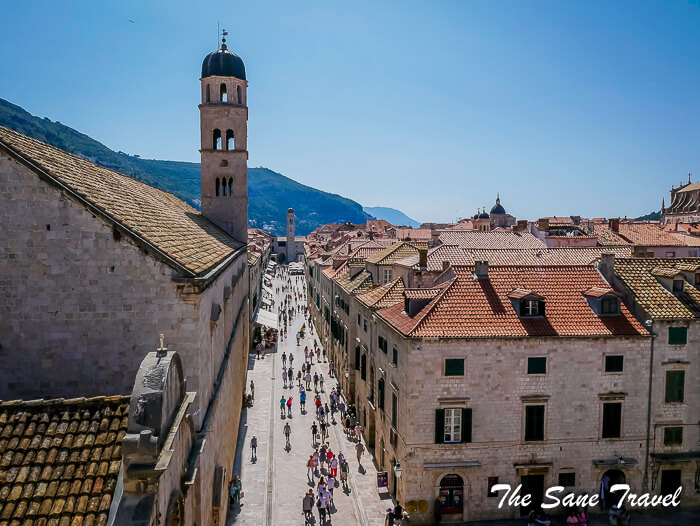

Rector’s Palace Cultural Historical Museum
One of the most impressive buildings in Dubrovnik hosts the Historical Museum of Dubrovnik. The building used to be the seat of the Rector of the Republic of Ragusa. It also housed an armoury, a powder magazine, a watch house, and a prison. The construction began in the 12th century and it’s one of two buildings that survived the earthquake of 1667. It represents a mixture of styles: it was meant to be Gothic, but due to restorations, some renaissance and baroque details were added.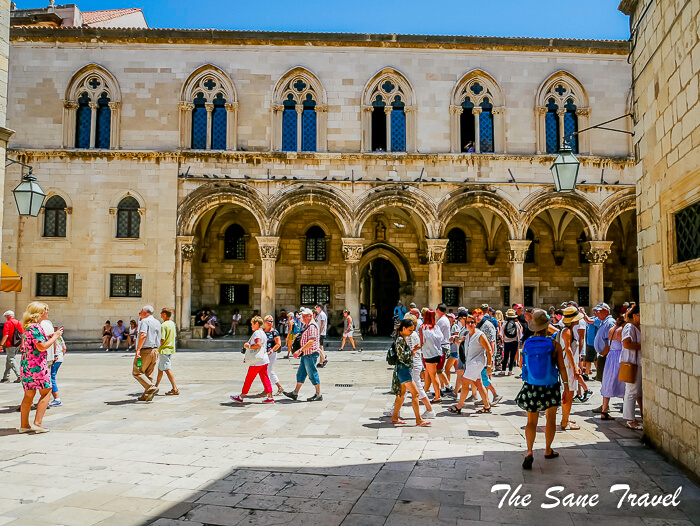
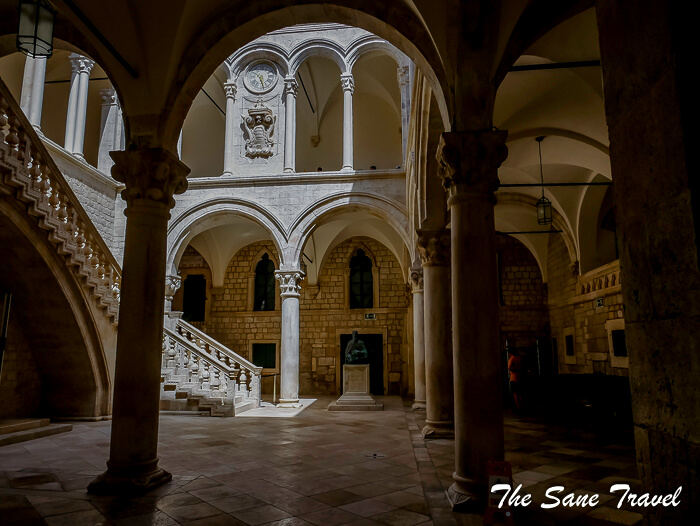
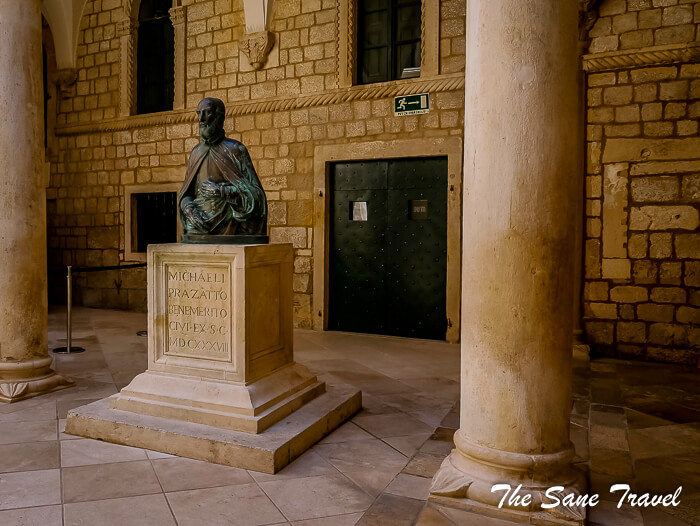
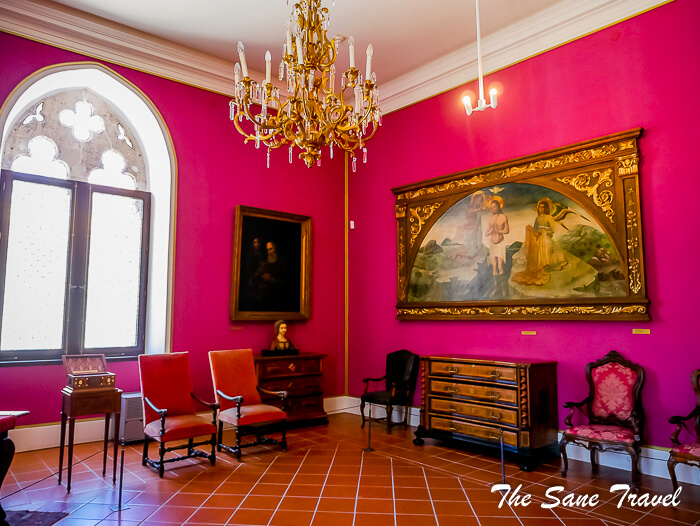
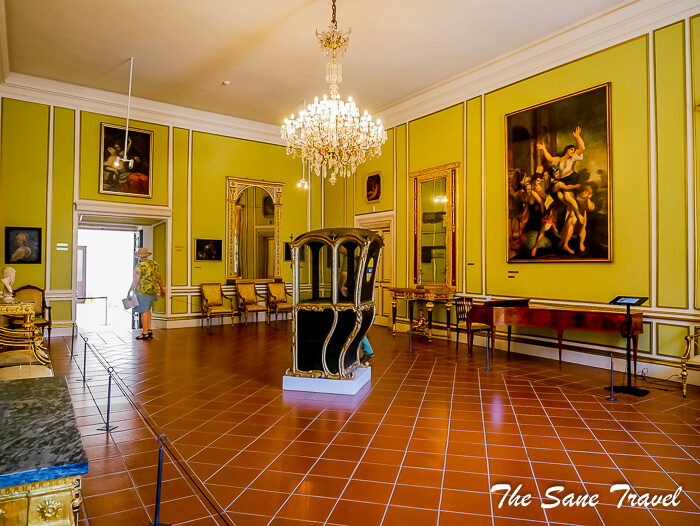
Address: Pred dvorom, 3. Free with Dubrovnik card.
Dubrovnik Cathedral
The cathedral has been there since the 12th century. It crumbled to dust in the Great Earthquake of 1667. The current Cathedral was constructed in the early 18th century. Marvel at the beauty of the marble altar of St. John and study the Assumption of the Virgin painting by Titan above the main altar. Stop by the cathedral’s side altars and chapels to browse paintings created between the 16th and 18th centuries.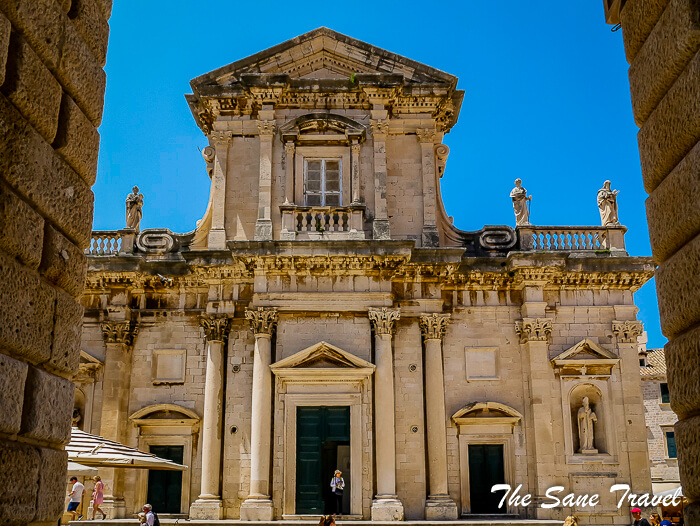
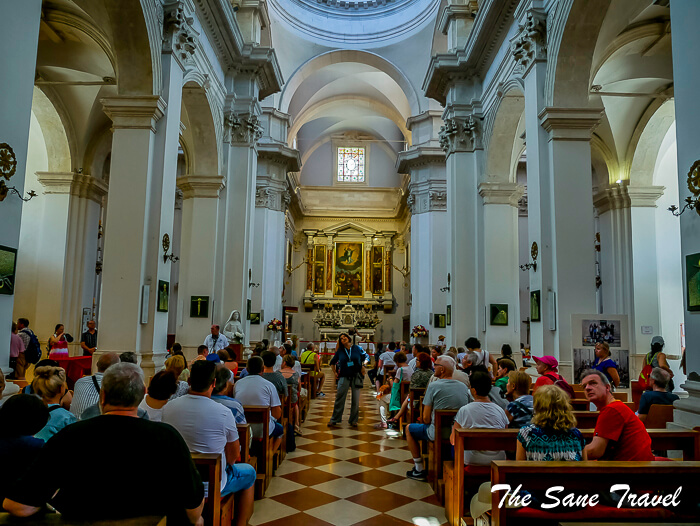
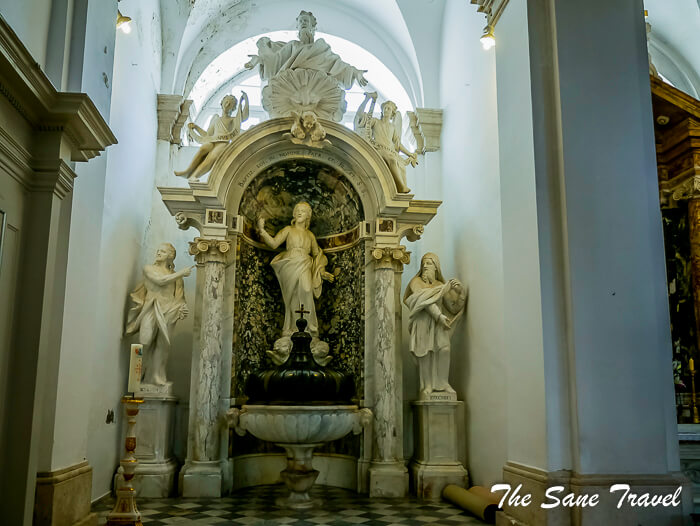
Church of St Ignatius
A monumental Baroque staircase leads to the Square where the Church of St Ignatius is located. The construction of the church was finished in the early 18th century. St Ignatius church is decorated by magnificent Baroque frescoes with scenes from the life of St. Ignatius de Loyola painted by Gaetano Garcia. The frescoes fit perfectly in the ambiance of the church. The church belfry houses the oldest bell in Dubrovnik, cast in 1355. 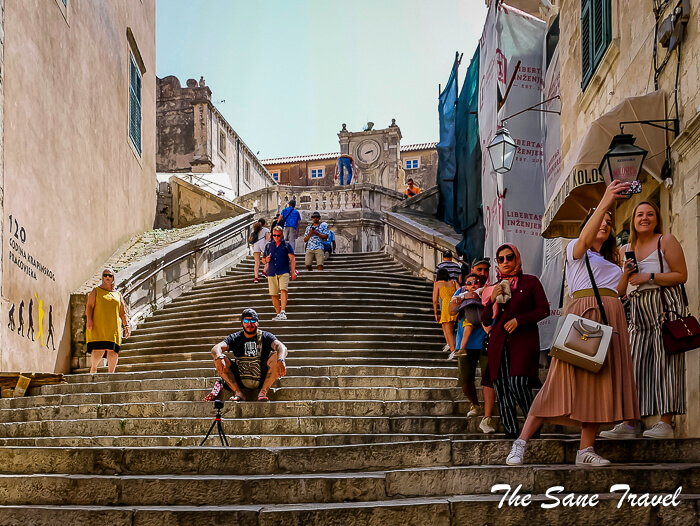
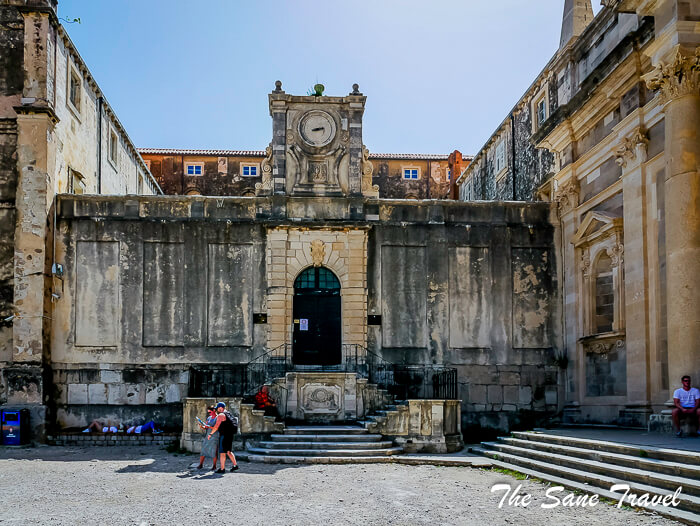
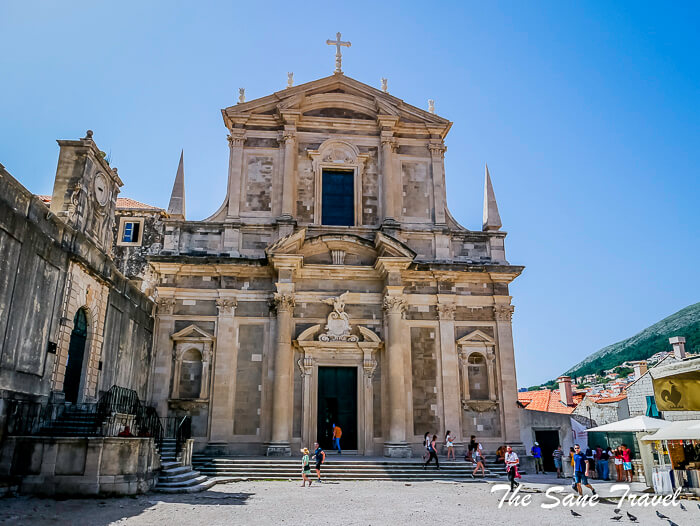
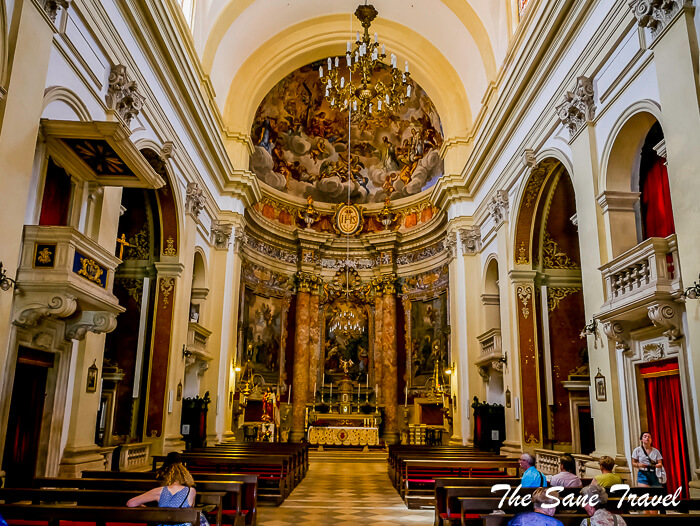
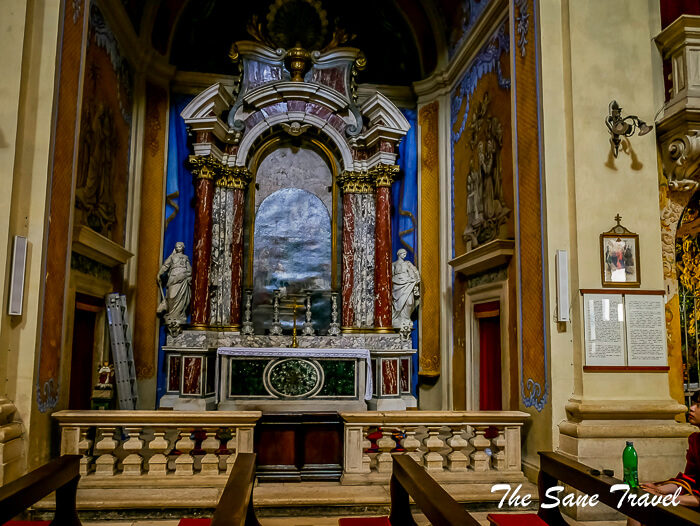
Ethnographic Museum Rupe
On the Western part of Dubrovnik’s Old Town, you may find this impressive museum that will take you back to the 16th century. The building itself used to be Republic’s granary, popularly known as Rupe/The Holes, which derives from the name for the underground grain storage areas carved out of bedrock. Here you can find the collections of traditional attire from Dubrovnik surroundings, items from the 19th century as well as a presentation of the traditional economic activities and the rural architecture of Dubrovnik countryside.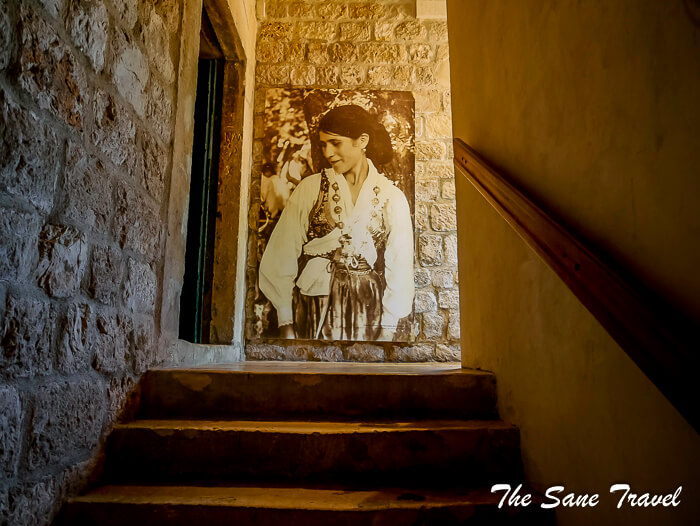
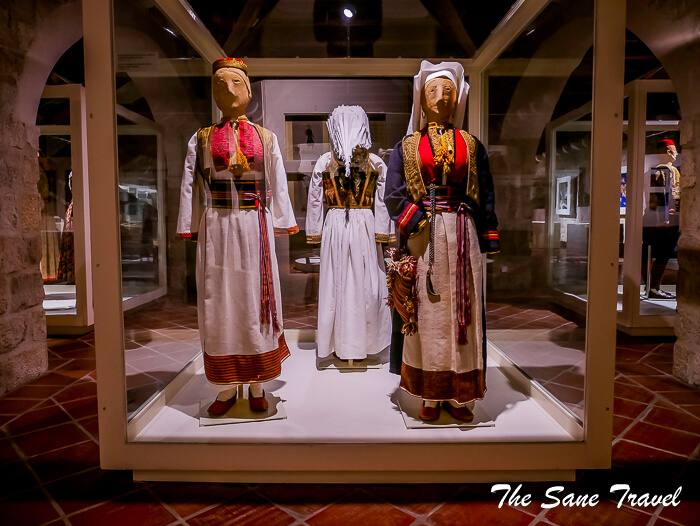
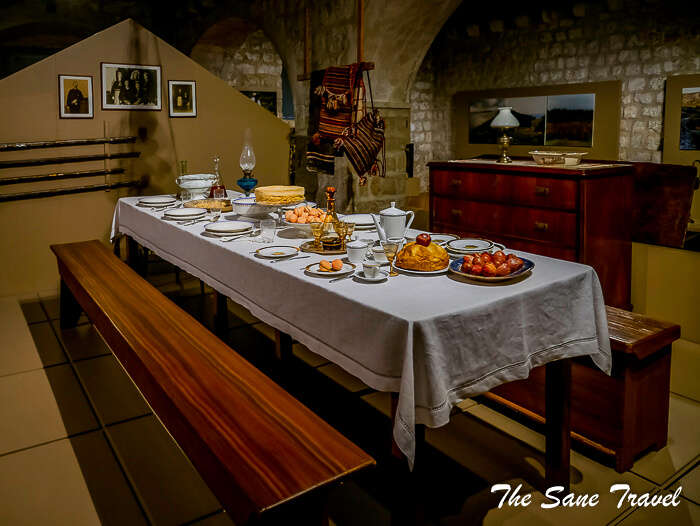 Address: Od Rupa Street, 3. Free with Dubrovnik card.
Address: Od Rupa Street, 3. Free with Dubrovnik card.
Museum Marin Držić House
It’s not a must in my opinion, but it’s interesting to see if you have time. Marin Drzic Vidra, known as the “king of laughter”, is one of the most famous Croatian Renaissance authors of the 16th century. Drzic was a priest, a comedian, and a rebel. His works are often staged during the famous Dubrovnik Summer Festival and in nearby Marin Drzic Theatre. 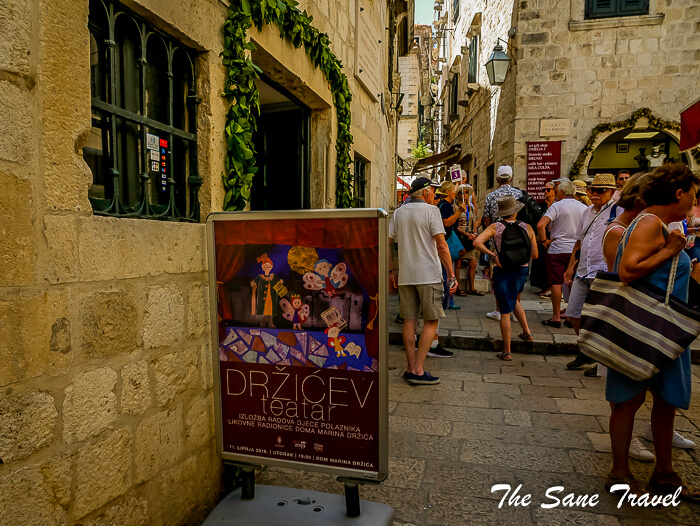
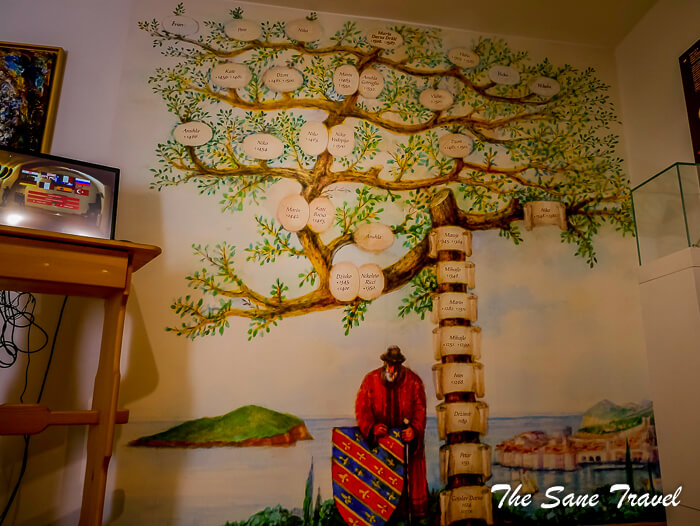 Address: Široka Ulica 7. Free with Dubrovnik card.
Address: Široka Ulica 7. Free with Dubrovnik card.
Then get back to the Pile gate and start your city walls walk.
Dubrovnik City Walls
Walking around the walls of Dubrovnik is a great way to see the city and its surroundings. Just be prepared that you will be one of the very many visitors. If you have a Dubrovnik card, visit the Maritime Museum on your way.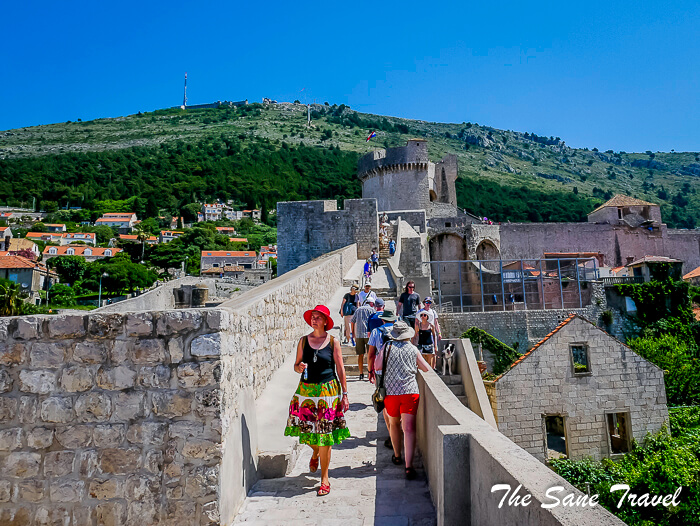
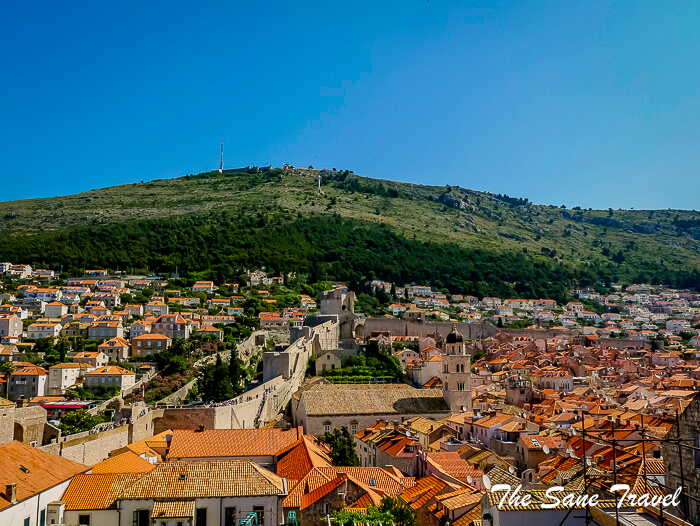
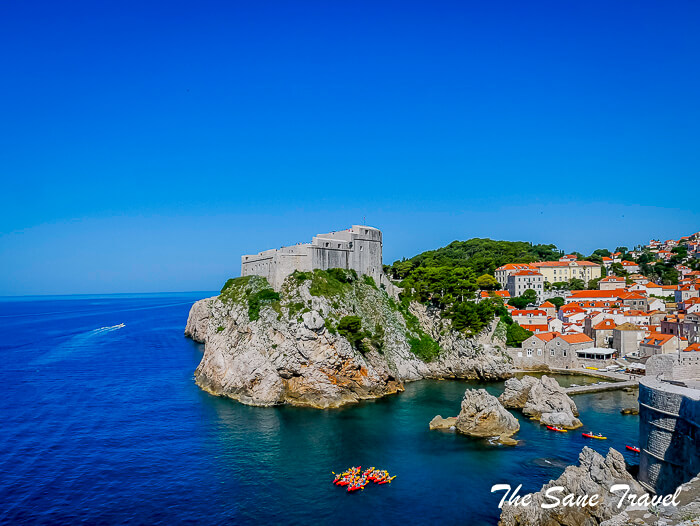
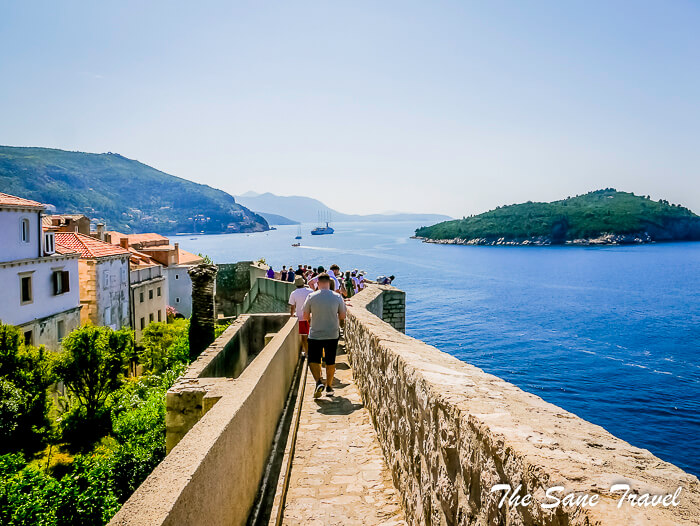
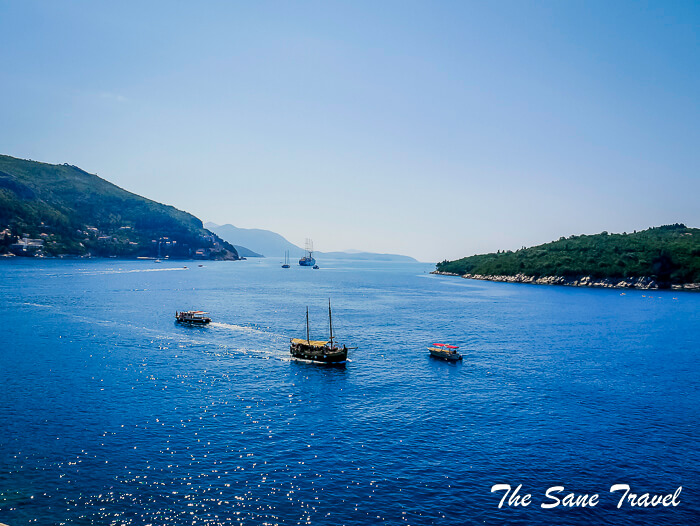
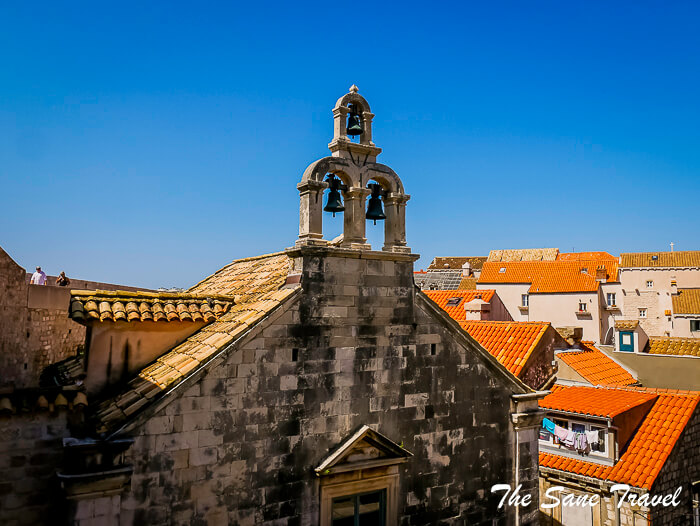
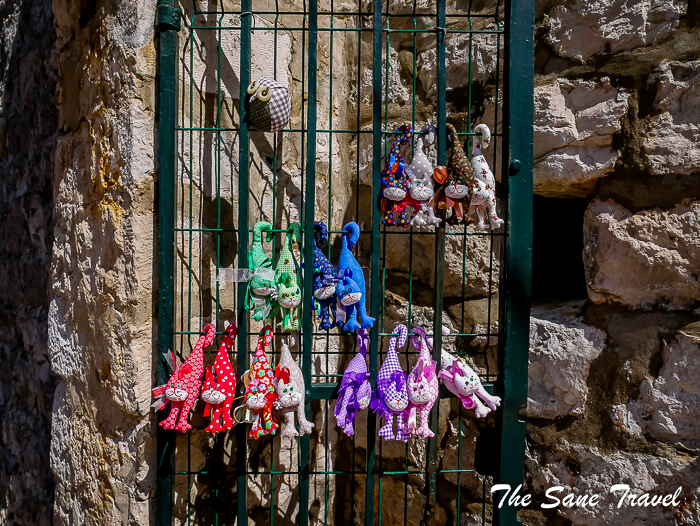
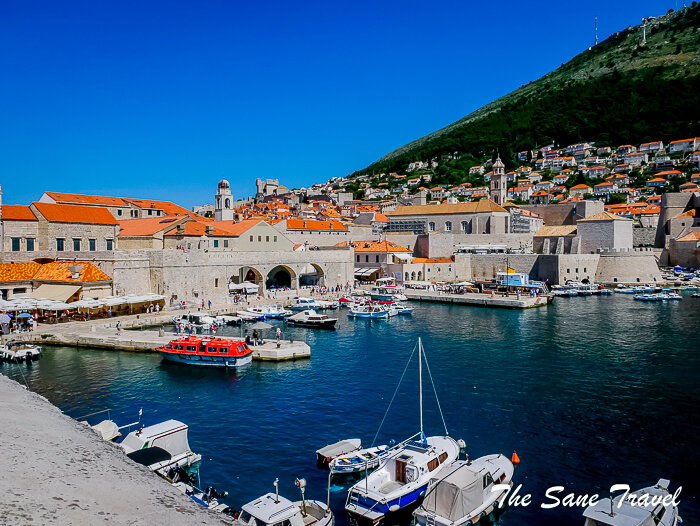
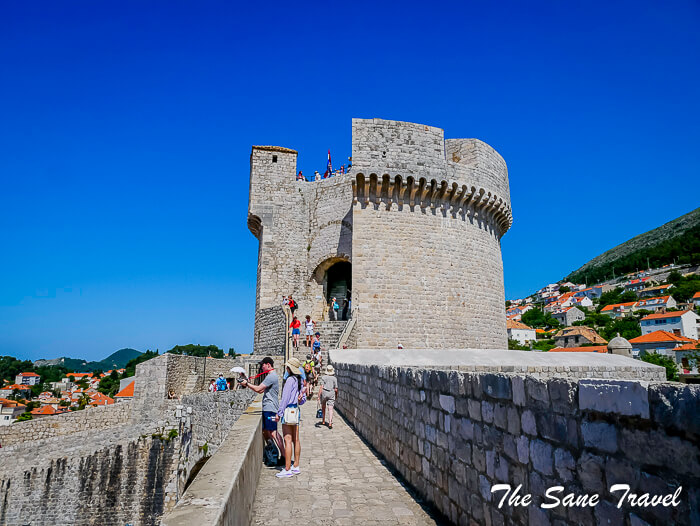
.jpg)
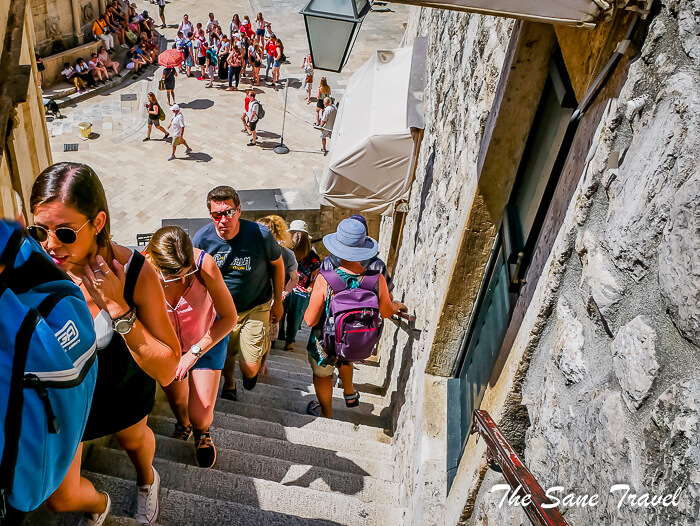
Maritime Museum
In the second half of the 16th century, the Republic of Ragusa was one of the leading navies in the world, which is why Dubrovnik seafarers became world famous carriers among foreign parts of the Mediterranean, the Black Sea, the Northern ocean parts of Germany, the Netherlands, England, and America as well. If you are willing to explore this part of the city’s history, the Maritime Museum is the right place to go. It offers a great variety of written documents, old editions and books, pictures of ships, ports and captains, archaeological finds of sunken ships, ship’s instruments and so on. This maritime museum is believed to be the richest in Croatia. 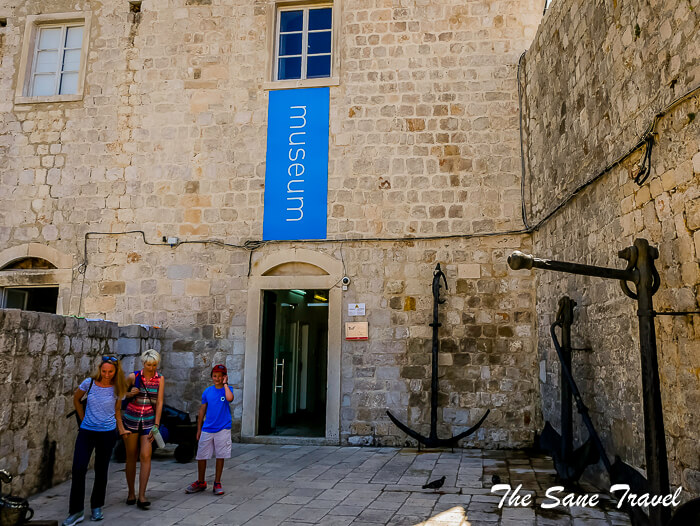
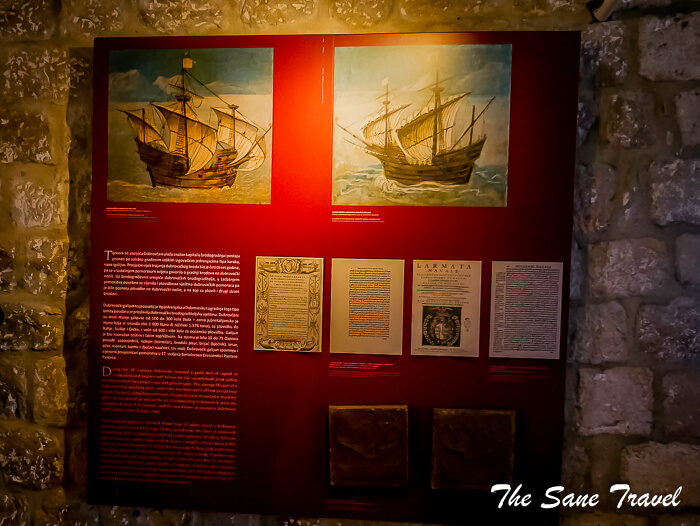
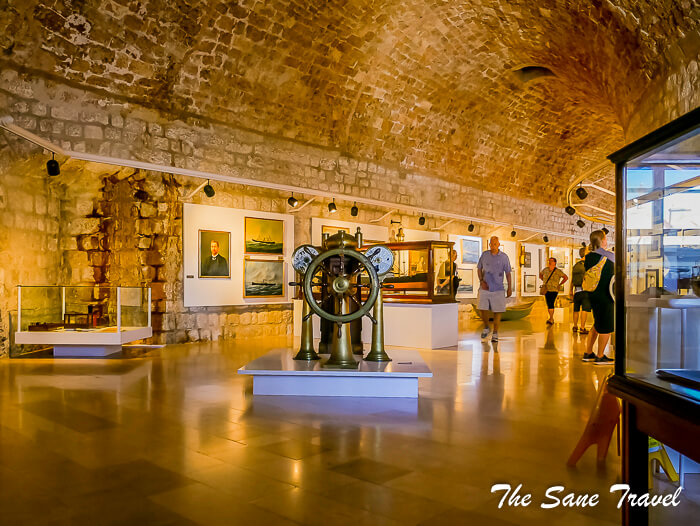
Address: St John Fortress. Free with Dubrovnik card.
Finish your sightseeing day by visiting Fort Lawrence outside the city walls.
Fort Lawrence
The Fort of St. Lawrence lies outside the city walls at the western entrance to the city. It proudly sits on its steep cliffs. It dominates both the sea and the land entrances to the city on the western side, protecting Dubrovnik's oldest harbour, Kalarinja. The fort has between 4 and 12 metre thick walls on three sides, north, west, and southwest, the sides the enemy could approach from. Throughout the centuries, this fort was adapted many times. It was a military base during the Austrian occupation, and then it was converted into a hospitality facility. Recently it has become one of the most beautiful stages in the world for the performance of Shakespeare's 'Hamlet'. 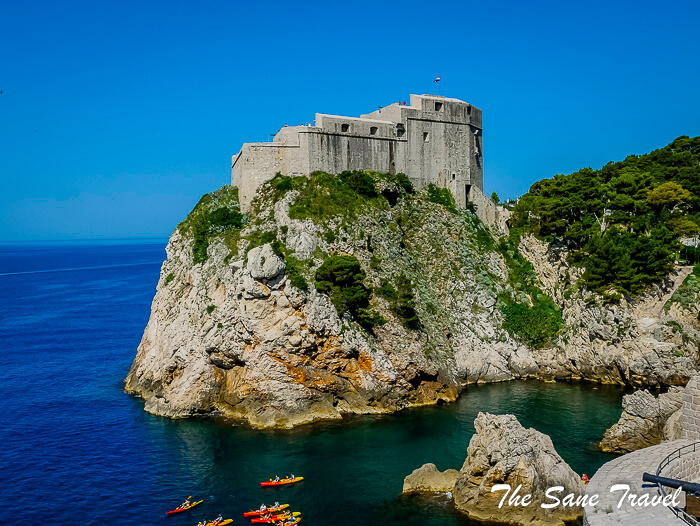
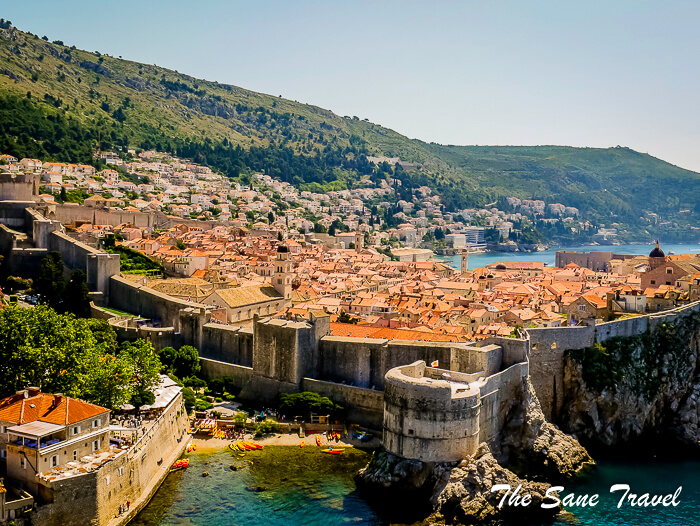
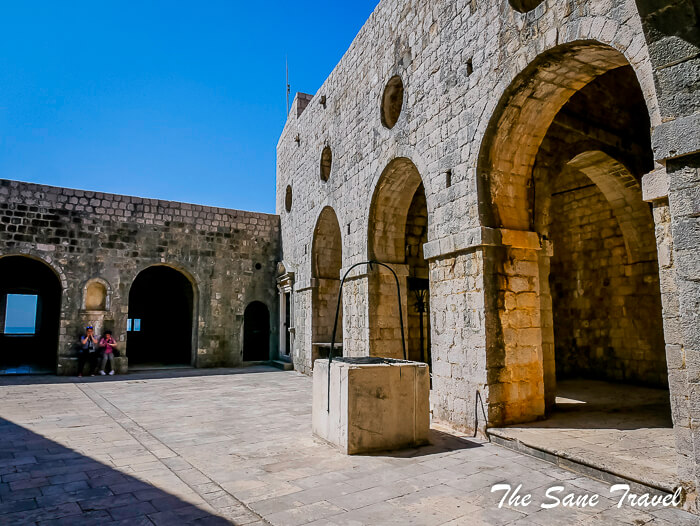 Free with Dubrovnik card.
Free with Dubrovnik card.
Day two
Start your day taking a bus to Cavtat town.
Visiting Cavtat
Cavtat is a pretty town, located around 20 km south of Dubrovnik, and is a great place to base yourself in if you don’t want the hustle and bustle of Dubrovnik. Cavtat is easy to reach from Dubrovnik – local bus number 10 is run on this route, with a bus running approximately every hour. See the schedules on the Dubrovnik Bus Terminal website. The bus stop is located near the Buza gate of Dubrovnik. You can also travel between the two by boat. I made a day trip by bus to Cavtat for an excellent lunch, swimming, and walking around the tranquil peninsula with great views. If you are a real beach lover you can check the best beaches in Dubrovnik to choose one for spending your morning.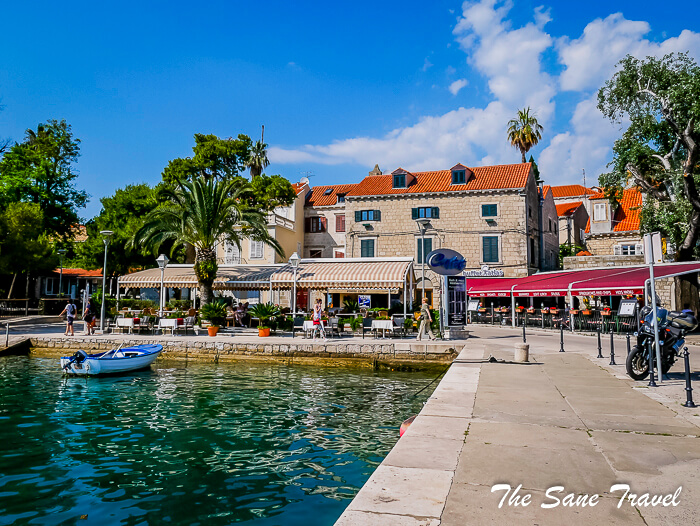
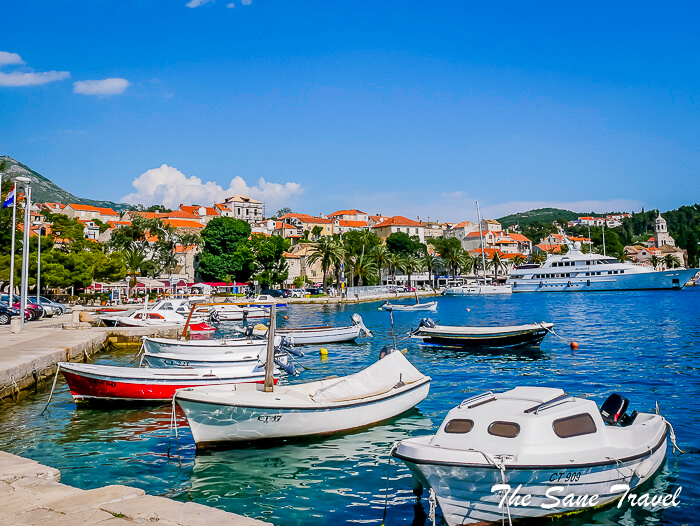
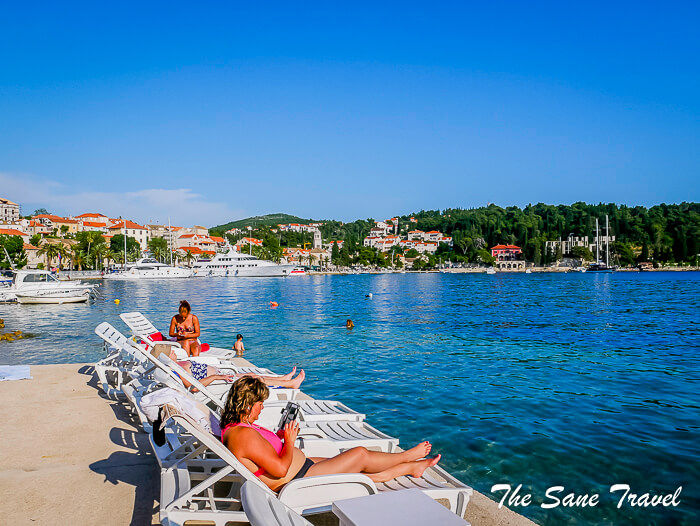
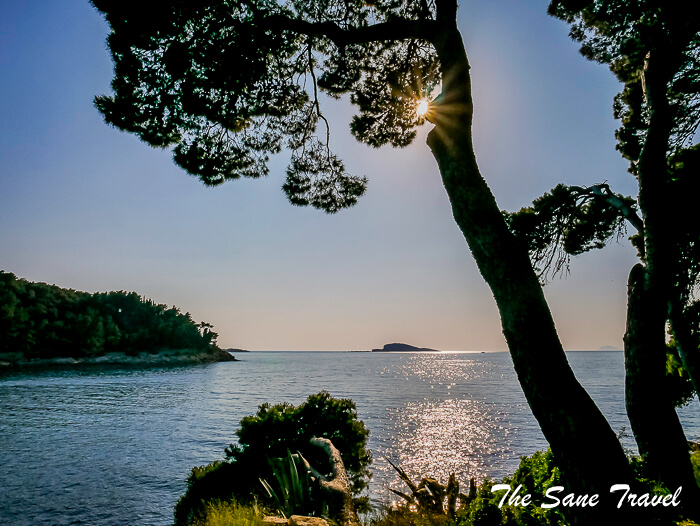
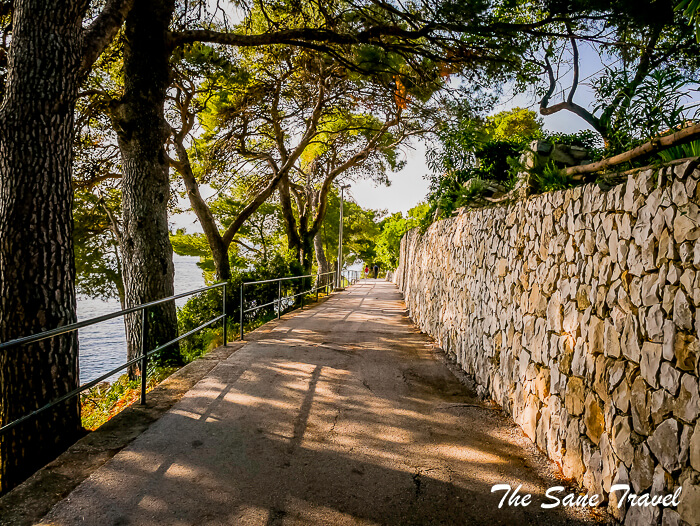
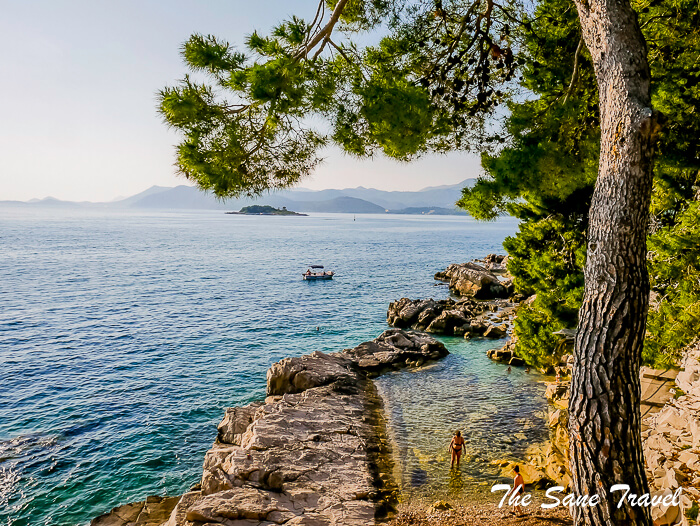 I stopped by Bugenvila restaurant by chance and was happy with my choice and the excellent lunch menu offer. Some food travel bloggers name it the best restaurant in Cavtat, and I can’t agree more with their opinion.
I stopped by Bugenvila restaurant by chance and was happy with my choice and the excellent lunch menu offer. Some food travel bloggers name it the best restaurant in Cavtat, and I can’t agree more with their opinion.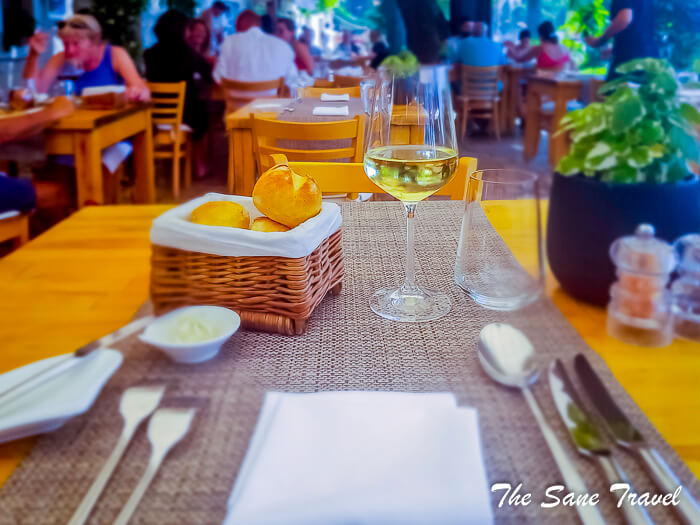

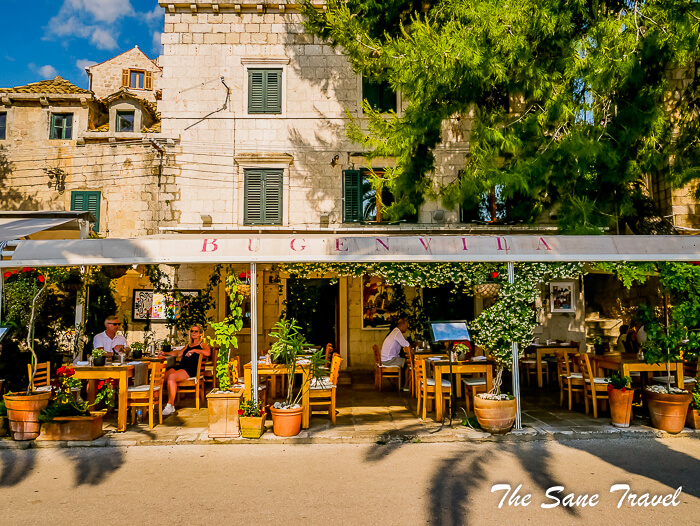 Address of Bugenvila restaurant: Obala Ante Starčevića 9
Address of Bugenvila restaurant: Obala Ante Starčevića 9
After you get back to Dubrovnik, spend your late afternoon and evening on Srd hill. Just notice that bus 10 takes a different route in Dubrovnik when going back, so consult a driver not to miss the right bus stop in the city.
Srd hill
The best views of Dubrovnik and the surrounding area are from the top of the 412 meter high Srd Hill. On a clear day, you can see up to 60 km (37 miles). As I was visiting Dubrovnik in June 2019, while cable car was not in operation, walking up was the only choice for me. The path is very exposed to the sun, so not recommended on a hot, summer day. The path is rocky; good shoes are a must. As you walk up the zigzagging road, you'll pass the "Stations of the Cross" panels that depict Christ's journey to his crucifixion. I was not happy about the condition of the path, so I recommend a cable car instead. It is also possible to drive up. Napoleon Bonaparte ordered the construction of Fort Imperial on the top of Srd Hill in the early 19th century. Later, Austrians strengthened the walls and the fortress. The important moment of the Imperial fort was the war in 1991. Only the Imperial fort was in the hands of the Croatian Army and all the surrounding areas were occupied. Today Imperial fort is a museum dedicated to the defence of Dubrovnik during the Homeland War. 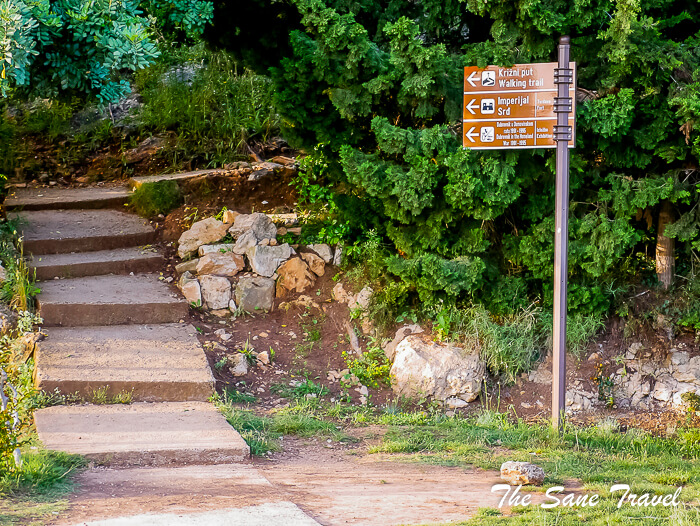
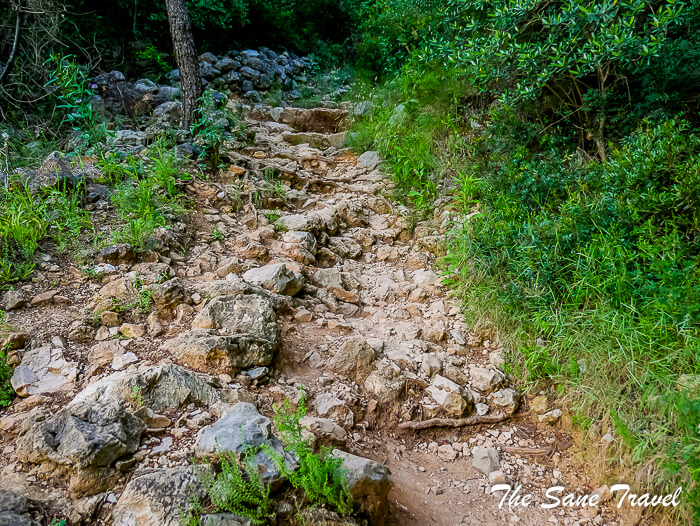
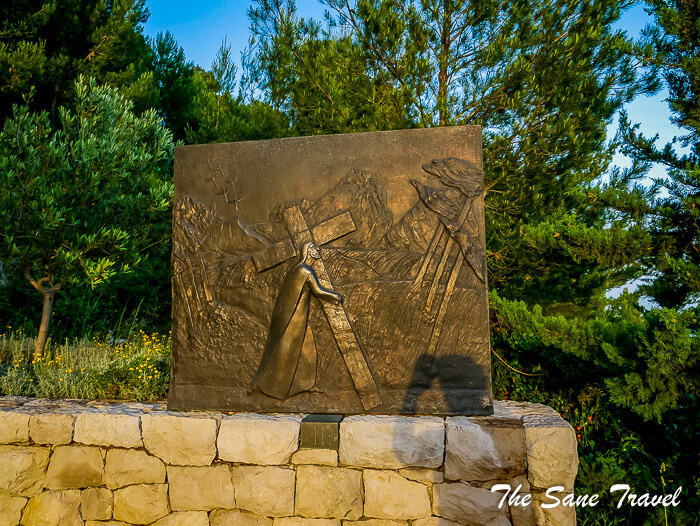
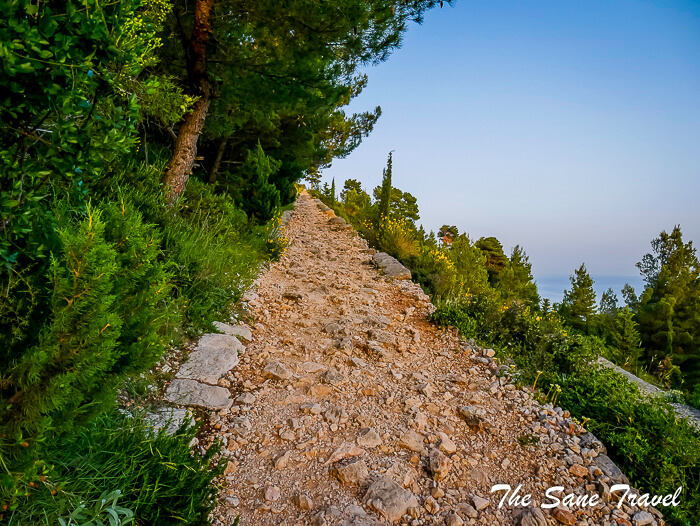
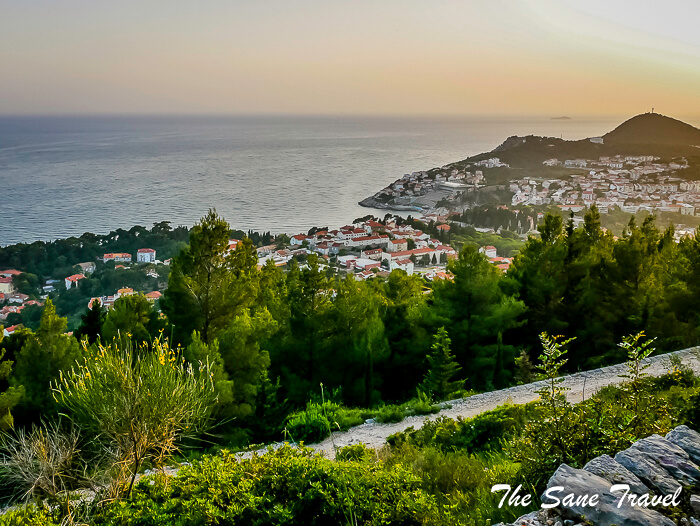
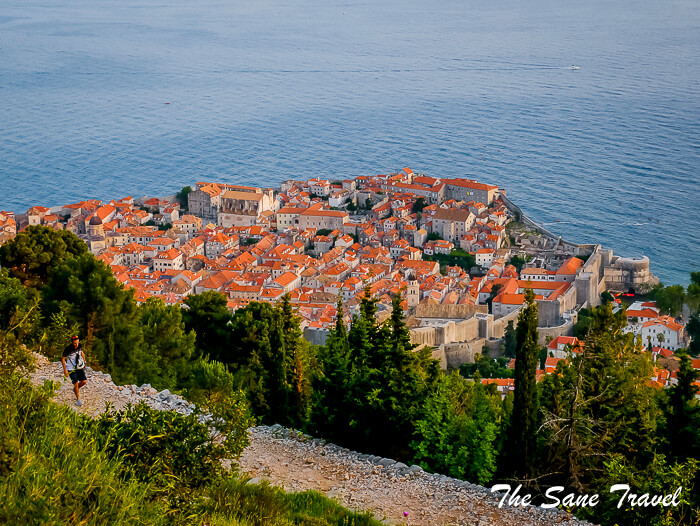
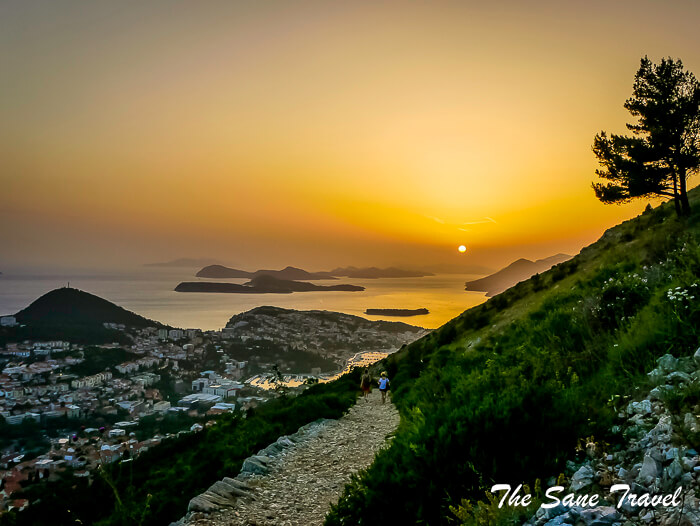
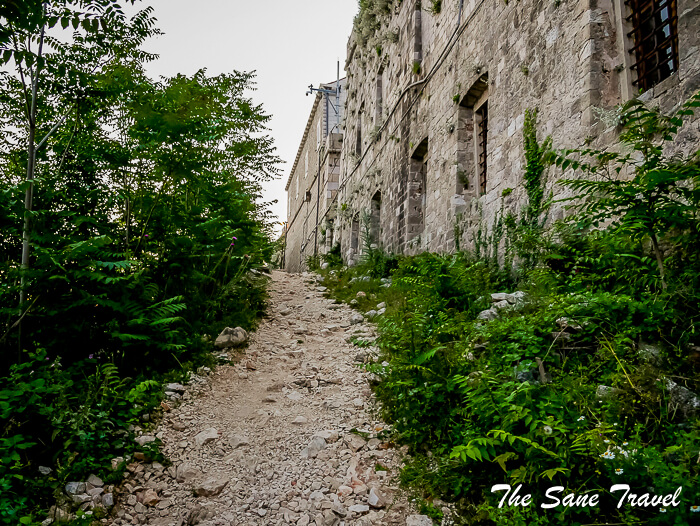
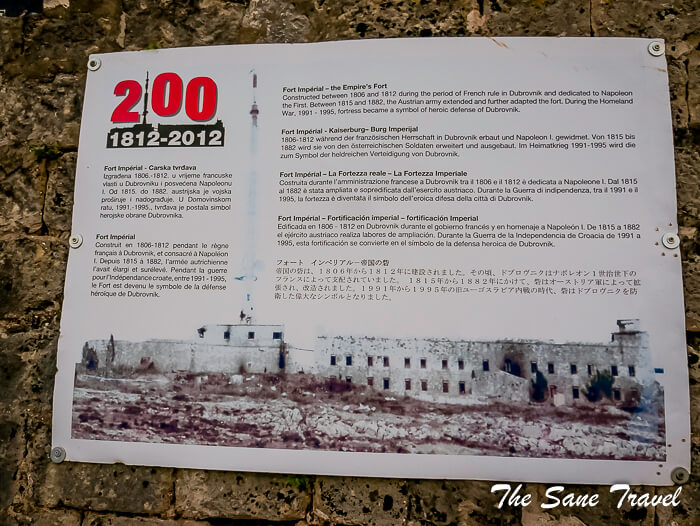 Srd Hill has Panorama Restaurant and a bar that offers fine dining in an unforgettable setting. The restaurant is open daily all year for lunch and May to September for dinner. Advance reservations are advisable.
Srd Hill has Panorama Restaurant and a bar that offers fine dining in an unforgettable setting. The restaurant is open daily all year for lunch and May to September for dinner. Advance reservations are advisable.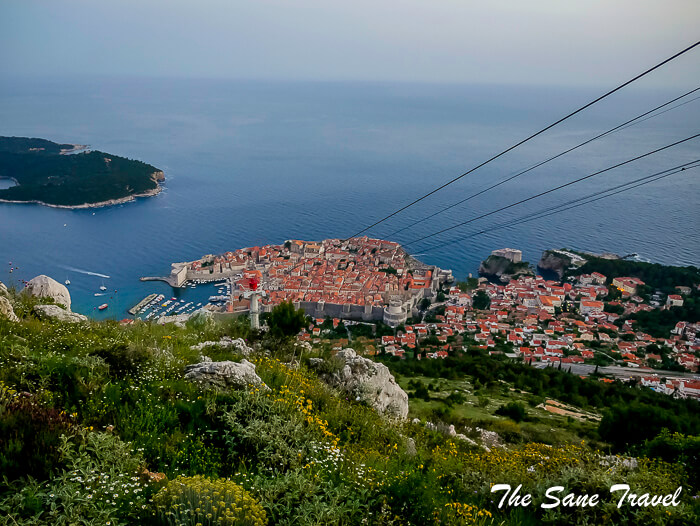
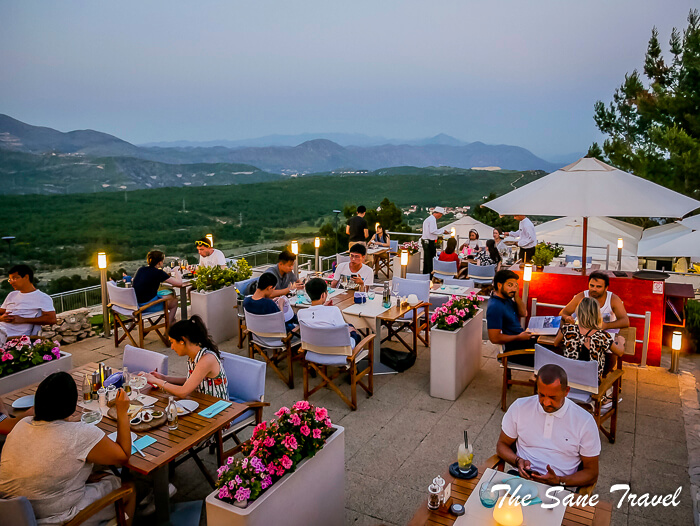
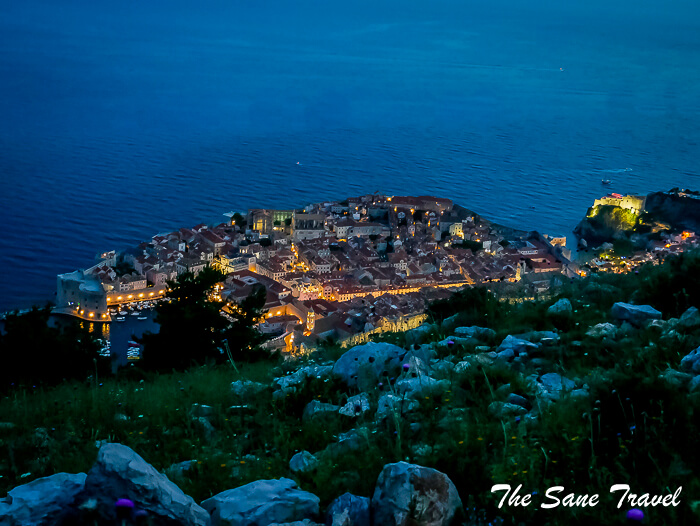
Where to stay in Dubrovnik
As in most other places in Croatia, my choice was an apartment. I stayed at Apartments Noa Old Town on Zudoiska street, and I must say it was a perfect location.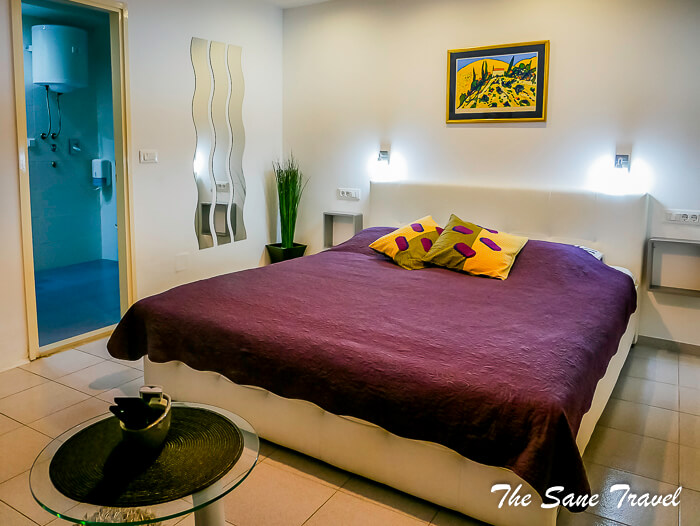
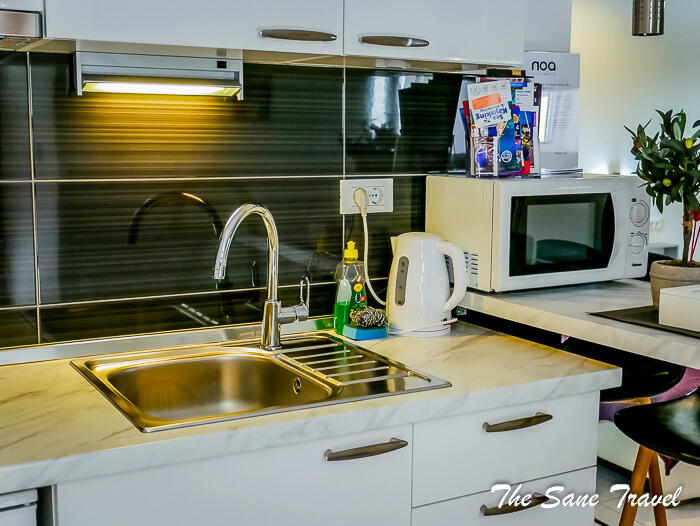
Practical information
Yes, Dubrovnik is expensive. One way to save money is to buy the Dubrovnik card even if you don’t usually buy city cards when traveling. Even if you are staying for two days, I recommend buying 3 days card because of the better package. If you have more time you can easily add the third day to your travel and visit Mljet, one of the best islands in Croatia, taking a boat trip.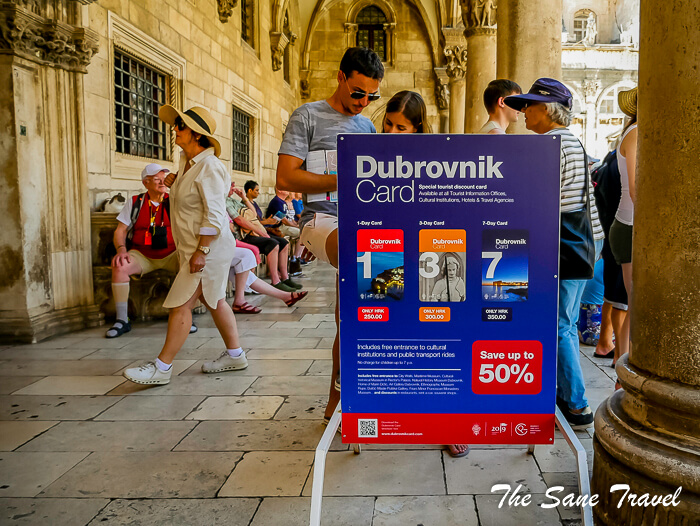 The price of one day city card can be 225 kunas (about 30 euros or 34 USD) and for three days 270 (about 37 euros or 41 USD) when buying on the Internet. You just have to go to the tourist information centre to exchange your purchase receipt for a real travel card. For comparison, the City walls ticket price alone is 200 kunas. A three day card gives you free entrance to 6 museums, 2 galleries, the city walls in Dubrovnik and 1 museum in Cavtat. By purchasing a three day Dubrovnik Card, you will also get a bus card that will allow you six free rides on public transport throughout the city of Dubrovnik, as well as coupons for two suburban rides on bus number 10 for Cavtat. Cavtat for sure has cheaper food and great restaurants. To avoid crowds go to Dubrovnik in April, May or September, October.
The price of one day city card can be 225 kunas (about 30 euros or 34 USD) and for three days 270 (about 37 euros or 41 USD) when buying on the Internet. You just have to go to the tourist information centre to exchange your purchase receipt for a real travel card. For comparison, the City walls ticket price alone is 200 kunas. A three day card gives you free entrance to 6 museums, 2 galleries, the city walls in Dubrovnik and 1 museum in Cavtat. By purchasing a three day Dubrovnik Card, you will also get a bus card that will allow you six free rides on public transport throughout the city of Dubrovnik, as well as coupons for two suburban rides on bus number 10 for Cavtat. Cavtat for sure has cheaper food and great restaurants. To avoid crowds go to Dubrovnik in April, May or September, October.
Like it? Pin it!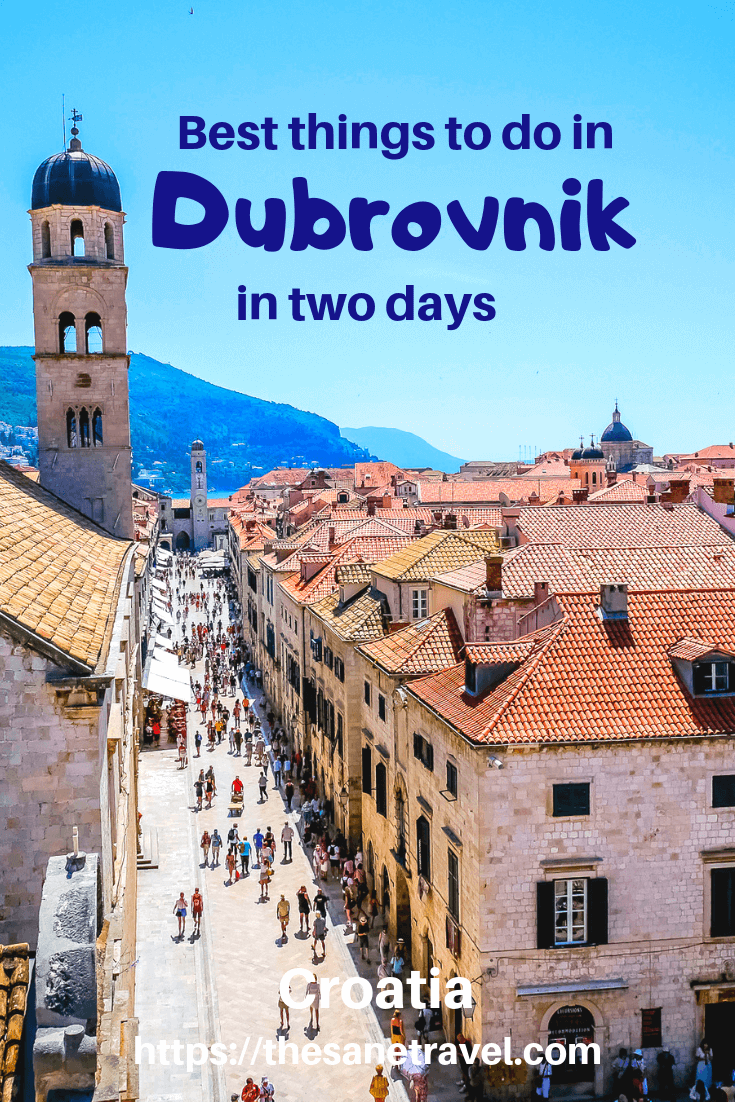
What did you think? Have you been to Dubrovnik? Or perhaps you’re thinking of visiting there in the near future? Either way, I’d love to hear from you so please add your comments below.
Author: Anita Sane

About the author
Anita is a part-time traveller, passionate photographer and a retired career woman from Latvia, travelling mostly solo for more than 15 years. She is a skilled travel planner who plans and executes her travels by herself. Anita wants to show you how to travel the world and open your mind to new experiences. Follow her on Facebook, Instagram, Pinterest, Twitter and Bloglovin.






Report
My comments